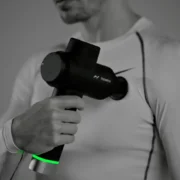Fitbit to Help Conduct Horror Movie Heart Rate Study

Wearable tech giant Fitbit will join FinanceBuzz in monitoring the heart rate of horror movie viewers.
Horror movie lovers tend to love this time of year as Halloween approaches and evenings consist of watching spooky films. This year, one lucky fan will get a chance to get paid to do just that. Fitbit is partnering with FinanceBuzz, an informational website, to find a Horror Heart Rate Analyst to watch scary movies. Analysts will be compensated $1300 to view 13 scary movies as FinanceBuzz conducts research. The website is interested to see if there is a correlation between a horror movie budget and the impact on a viewer’s heart.
In addition to being paid, the Horror Heart Rate Analyst will receive a Fitbit to record their heart rate as they view various horror films ranging from low to high-budget. The viewing list includes Saw, The Blair Witch Project, and Get Out.
While wearable tech is typically used for fitness and activity purposes, Fitbit’s involvement in the FinanceBuzz study is intriguing. The upcoming horror movie study shows that such digital devices can be utilized in non-traditional methods, besides athletic performance and health. Fitbit crossing genres into data collection for films suggests that the potential for wearables is endless.
Using PurePulse, which includes 50 patents, Fitbit uses light to measure blood flow. The sensor tracks light absorption, which represents each beat of the heart and will provide data on a user’s heart rate per minute.
Fitbit said they were happy to be selected for FinanceBuzz’s study, telling Athletech News, “We’re pleased they chose Fitbit, and we’re looking forward to seeing the results!”
Applications to become a Horror Heart Rate Analyst are due by September 26th. Participants must be at least 18.
According to global research company Gartner, wearable devices will total $81.5 billion by the end of 2021, an 18.1% increase since 2020. The demand for wearables is believed to be a result of remote work and an increased interest in health and well-being.
Courtney Rehfeldt has worked in the broadcasting media industry since 2007 and has freelanced since 2012. Her work has been featured in Age of Awareness, Times Beacon Record, The New York Times, and she has an upcoming piece in Slate. She studied yoga & meditation under Beryl Bender Birch at The Hard & The Soft Yoga Institute. She enjoys hiking, being outdoors, and is an avid reader. Courtney has a BA in Media & Communications studies.



